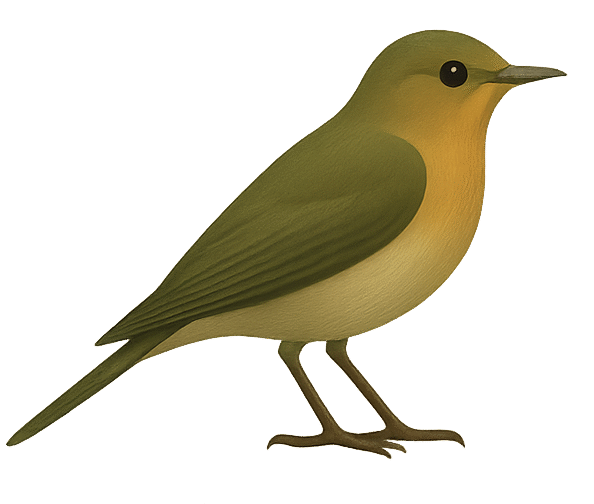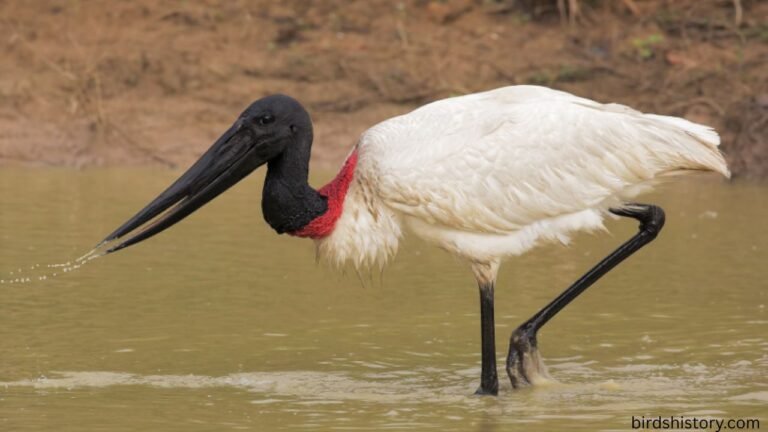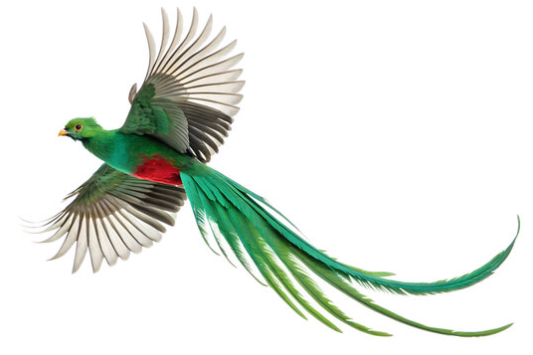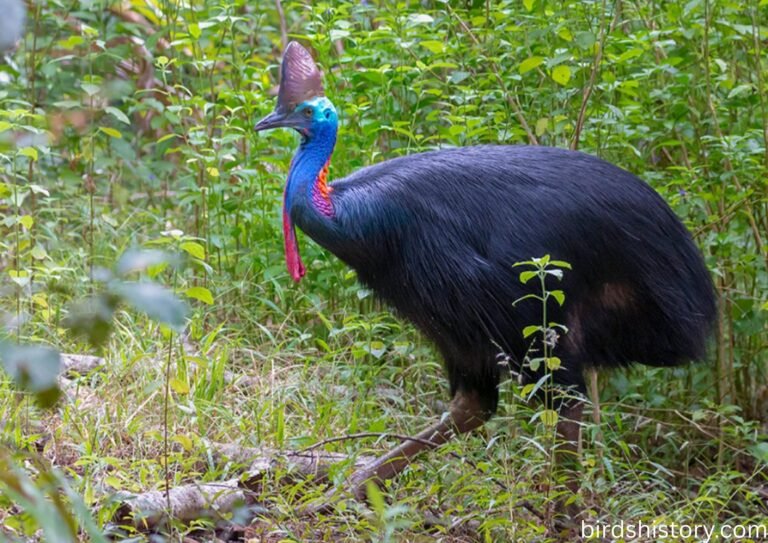Falkland Steamer Duck: The Powerful Flightless Swimmer of the South Atlantic
The Falkland Steamer Duck is one of those birds that immediately captures attention—not because of flashy colors or melodic songs, but because of its unique lifestyle and raw power. Unlike most ducks that take to the skies, the Falkland Steamer Duck is entirely flightless, relying on its muscular body and wing-paddling swimming style to dominate the waters around the Falkland Islands.
This duck gets its name from its peculiar way of moving through the water.Unlike most other water birds that glide smoothly, the White-headed Steamer Duck beats its powerful, short wings against the water’s surface, propelling itself forward in a way that resembles the paddles of an old steamboat. Watching a steamer duck in action is like seeing a little engine churn across the waves, determined and unstoppable.
A fun fact? Despite their inability to fly, these ducks are known for their aggressive, fearless behavior. They’ve been observed fighting off seabirds, other ducks, and even animals much larger than themselves when defending their territory. This unusual combination of toughness and adaptation makes the Falkland Steamer Duck one of the most fascinating birds of South America.
Falkland Steamer Duck Taxonomy / Classification
Here’s how the Falkland Steamer Duck fits into the scientific classification system:
- Common Name: Falkland Steamer Duck
- Scientific Name: Tachyeres brachypterus
- Family: Anatidae
- Order: Anseriformes
- Class: Aves
The genus Tachyeres includes four species of steamer ducks, all of which are native to South America: the Flying Steamer Duck, Magellanic Steamer Duck, White-headed Steamer Duck, and the Falkland Steamer Duck. Among them, the Falkland Steamer Duck is notable because it is strictly flightless, unlike its cousin the Flying Steamer Duck.
Falkland Steamer Duck Physical Description
The Falkland Steamer Duck is a large, heavy-bodied waterfowl built for strength rather than grace.
- Size: 65–84 cm (25–33 inches) in length
- Tipping the scales at 3 to 6.5 kilograms (or 6.6 to 14 pounds), this species is considered one of the world’s heaviest ducks.
Also read: /tasmanian-native-hen/
- Plumage:
- Both sexes are similar, with grayish bodies, white underparts, and darker wings.
- The head often appears paler than the body, giving a subtle contrast.
- Beak: Yellowish-orange in males, duller in females.
- Wings: Short, stubby, and unable to lift the bird into flight. Instead, they are adapted for their “steaming” swimming behavior.
- Feet: Bright orange, large, and webbed, providing superb swimming power.
Male vs. Female: Males tend to be slightly larger and bulkier, with brighter beaks, but overall the sexes look quite similar.
Unique Trait: The Falkland Steamer Duck’s heavy, muscular build and reduced wing size make it flightless—a rare trait among ducks.
Habitat and Range of Falkland Steamer Duck
The Falkland Steamer Duck is endemic to the Falkland Islands, meaning it is found nowhere else in the world.
- Preferred Habitats:
- Coastal areas with rocky shores
- Bays and inlets with calm waters
- Shallow coastal shelves rich in marine life
Unlike migratory ducks, the Falkland Steamer Duck is sedentary. It stays in its coastal environment year-round, relying on abundant food sources from the surrounding seas.
Falkland Steamer Duck Diet and Feeding Habits
This duck is a marine predator, well-adapted to life in the coastal waters of the South Atlantic.
- Diet:
- Crustaceans such as crabs and shrimp
- Mollusks like mussels and limpets
- Small fish
- Aquatic insects
- Feeding Techniques:
- Expert divers, plunging below the water’s surface to find prey.
- Uses its strong bill to crush shellfish and crustaceans.
- Often forages along rocky intertidal zones where food is abundant.
Their diet makes them vital to the local marine ecosystem, helping regulate populations of shellfish and small invertebrates.

Falkland Steamer Duck Behavior and Lifestyle
The Falkland Steamer Duck is widely recognized for its aggressive and territorial nature.
- Social Structure: They live in pairs or small family groups. Males are especially aggressive, defending their breeding territory with remarkable ferocity.
- Flight Style: They cannot fly, but they run across the water flapping their wings like a boat’s paddle wheels—hence the “steamer” name.
- Swimming Ability: Strong, fast swimmers capable of covering long distances in pursuit of food or defending their space.
- Calls:
- Males produce loud growling and grunting sounds.
- Females are slightly quieter but can also make harsh calls.
- Aggression: Known to fight violently with intruding ducks, seabirds, and even predators.
This combination of aggression and stamina has earned them a reputation as one of the toughest waterfowl in the world.
Reproduction and Lifespan
- Breeding Season: Spring to early summer (October–January in the Southern Hemisphere).
- Nesting:
- Nests are usually hidden among tall grasses or rocky crevices near shorelines.
- Constructed with grasses and lined with soft down feathers.
- Eggs:
- Clutch size ranges from 5–12 eggs.
- Eggs are cream to off-white and fairly large.
- Incubation: Lasts about 30–35 days, with the female primarily responsible for incubation.
- Parental Care:
- Females care for the young, while males fiercely defend the territory.
- The young ducklings are highly developed at birth, meaning they can swim and find food on their own soon after they hatch.
- Lifespan: Estimated 10–20 years in the wild.
Predators and Threats
- Natural Predators:
- Eggs and young chicks are vulnerable to predation by large seabirds such as skuas and gulls.
- Adults have few natural predators due to their size and aggression.
- Environmental Threats:
- Oil spills and marine pollution can devastate coastal habitats.
- Overfishing reduces food availability.
- Human Impact:
- Habitat disturbance from human activity and introduced species.
Despite being tough, their restricted range makes them vulnerable to sudden environmental changes.

Falkland Steamer Duck Conservation Status
- IUCN Red List: Least Concern
- Population Size: Estimated between 10,000–20,000 individuals.
- Reasons for Stability:
- The isolated nature of the Falkland Islands offers a form of natural protection.
- Limited human population reduces hunting pressure.
Conservation Efforts:
- Protected under Falkland Islands law.
- Ongoing monitoring ensures the population remains stable.
- Awareness programs emphasize the importance of safeguarding marine ecosystems.
While not currently threatened, their limited range means conservation vigilance is essential.
Interesting Facts About Falkland Steamer Duck
- Unique Name Origin: The “steamer” reference comes from their wing-paddling swimming style.
- Flightless Adaptation: Unlike most ducks, Falkland Steamer Ducks have traded flight for swimming power.
- Fearless Fighters: They are notoriously aggressive, often fighting with intruders many times their size.
- Restricted Range: They are one of the very few duck species found only in the Falkland Islands.
- Evolutionary Puzzle: Their flightlessness raises questions about how species adapt in isolated environments.
Conclusion
The Falkland Steamer Duck is a remarkable bird that defies typical expectations of what a waterfowl should be. While most ducks take to the skies, this species thrives entirely without flight, proving that adaptation comes in many forms. With its muscular body, fierce territorial instincts, and unique swimming style, it is perfectly suited to the rocky coasts of the Falkland Islands.
Though currently stable in population, the species remains vulnerable due to its restricted geographic range. Protecting its coastal environment ensures that future generations can witness this remarkable bird in action.
The Falkland Steamer Duck is more than just a flightless oddity—it’s a living reminder of how evolution shapes species to survive in their unique environments.

FAQs About Falkland Steamer Duck
1. Why is it called a Steamer Duck?
Because of its habit of beating its wings against the water while swimming, resembling a paddle steamer boat.
2. Can the Falkland Steamer Duck fly?
No, it is completely flightless.
3. Where is Falkland Steamer Duck found?
Exclusively in the Falkland Islands.
4. What does Falkland Steamer Duck eat?
Primarily crustaceans, mollusks, and small fish.
5. How big is Falkland Steamer Duck?
Up to 84 cm long and weighing as much as 6.5 kg, making it one of the largest ducks.
6. Are Falkland Steamer Ducks aggressive?
Yes, they are known for their extreme territorial aggression.
7. How many eggs do Falkland Steamer Duck lay?
Between 5 and 12 eggs per clutch.
8. Are Falkland Steamer Duck endangered?
Currently listed as Least Concern, though their range is very limited.
9. How do Falkland Steamer Duck move in water?
They paddle their short wings against the surface, “steaming” like a boat.
10. Why are Falkland Steamer Duck important?
They are an essential component of the marine ecosystem.







